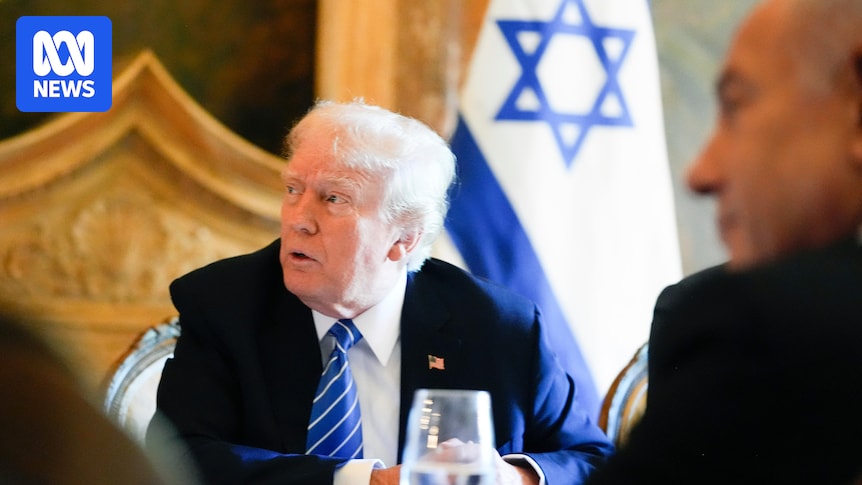
Finally, a glimmer of hope emerges in the Middle East as the hostilities in Gaza are poised to cease. If everything proceeds as planned, former US President Donald Trump will receive credit for orchestrating an end to the devastating conflict in Gaza. In the coming days, the 48 remaining hostages in Gaza are expected to be returned to Israel, with 20 believed to still be alive. Simultaneously, Israel’s bombing of Gaza is set to halt, offering much-needed relief to the beleaguered Palestinian population trapped within the densely populated strip.
The announcement comes as a significant development for a region that has been engulfed in violence for decades. According to UNICEF, since the war began two years ago, an average of 28 children per day have been killed in Gaza, equating to a classroom of children lost daily. Trump’s intervention, leveraging the power of his office to pressure both Israel and, indirectly through Qatar, Hamas, has been pivotal in halting these tragic losses.
Trump’s Diplomatic Maneuvering
Trump’s approach has not been without criticism. Detractors argue that he should have exerted pressure on Israel earlier, upon his return to office, to prevent the widespread civilian casualties. While no reasonable person disputes Israel’s right to respond to Hamas’s atrocities on October 7, 2023, critics contend that the scale of civilian casualties could have been mitigated.
Israel maintains that civilian casualties were unavoidable due to Hamas embedding itself within civilian areas. However, some analysts argue that Israel, known for its precision in targeted operations, could have spared many lives by focusing more strategically on Hamas officials and fighters.
The Humanitarian Crisis in Gaza
Israel’s military actions have rendered Gaza nearly uninhabitable for its 2.1 million residents. James Elder of UNICEF has provided harrowing accounts of the humanitarian catastrophe, describing areas like Al Mawasi as “grotesquely overcrowded and stripped of the essentials of survival.” Elder reports that 85% of families live within 10 meters of open sewage and other hazards.
For the nine months since Trump’s return to office, the US has continued to supply Israel with the munitions used in these bombings. Despite this, Trump’s recent actions have finally brought a halt to the violence, contrasting sharply with his predecessor, Joe Biden, who faced criticism for his perceived ineffectiveness in addressing the crisis.
A Fragile Peace
While Trump deserves credit for facilitating a ceasefire, his claim of achieving a historic peace in the Middle East is seen as overblown. The Israeli-Palestinian conflict, with its deep-rooted historical tensions, remains unresolved. The current ceasefire represents merely a pause in a long-standing cycle of violence, rather than a lasting solution.
The conflict’s history is marked by intermittent periods of calm followed by renewed violence. The ideology of Hamas, viewed by many in the Arab world as a resistance movement, persists despite the group’s weakened military capability. This ideology, however, continues to pose a threat to long-term peace.
The Two-State Solution: A Path Forward?
The international community, including the US under Trump’s leadership, now faces the challenge of pushing for a two-state solution. Historically, both Hamas and the Israeli government under Prime Minister Benjamin Netanyahu have opposed such a resolution, complicating efforts to achieve lasting peace.
The formation of two states was initially proposed by the United Nations in 1947, with widespread international support. Recently, Australia joined over 150 countries in formally recognizing a Palestinian state. However, achieving a two-state solution remains fraught with challenges, particularly given the political dynamics within Israel and the Palestinian territories.
Global Implications and Future Prospects
As the ceasefire takes hold, the international community must seize this moment to push for a sustainable peace. This involves marginalizing any remaining influence of Hamas and pressuring Israel to agree to a Palestinian state. Economic sanctions, akin to those imposed on apartheid South Africa, may be necessary to shift Israeli policy.
Ultimately, the path to peace requires addressing the demographic realities in the West Bank and Gaza, where high Palestinian birth rates contrast with the expansion of Israeli settlements. The occupation, characterized by military control over a growing Palestinian population, remains a central issue.
When asked about his stance on a two-state solution, Trump has remained non-committal. Yet, should he succeed in ending the decades-long conflict and achieving a two-state resolution, he could indeed become a serious contender for the Nobel Peace Prize. The world watches closely as these diplomatic efforts unfold, hoping for a breakthrough in one of the most enduring conflicts of our time.





